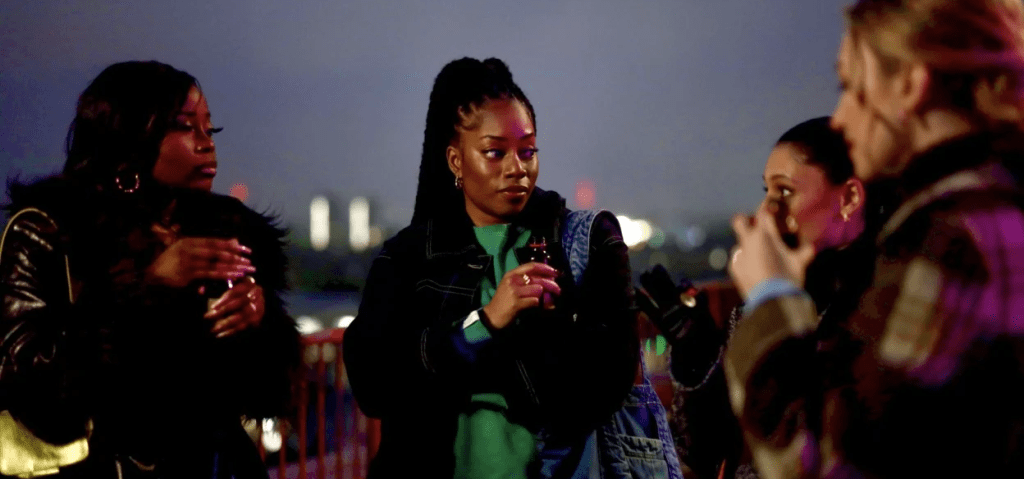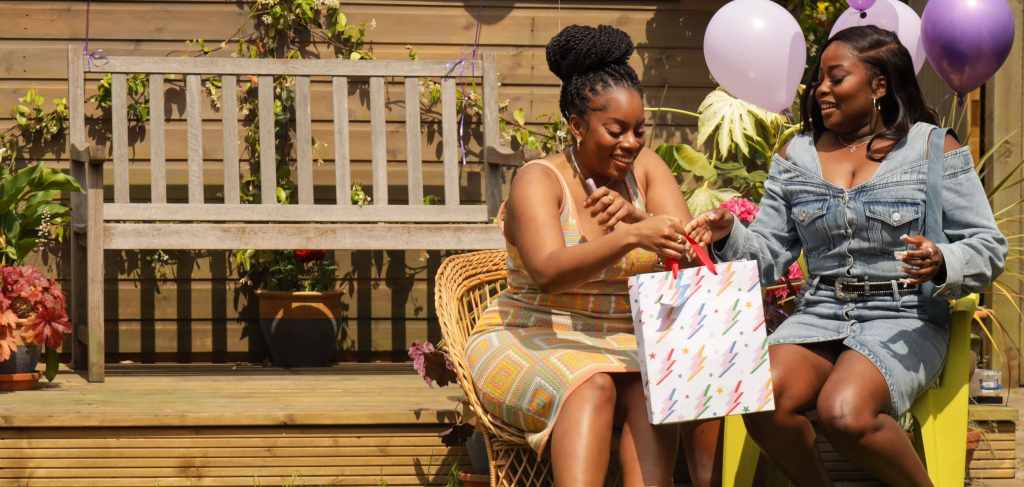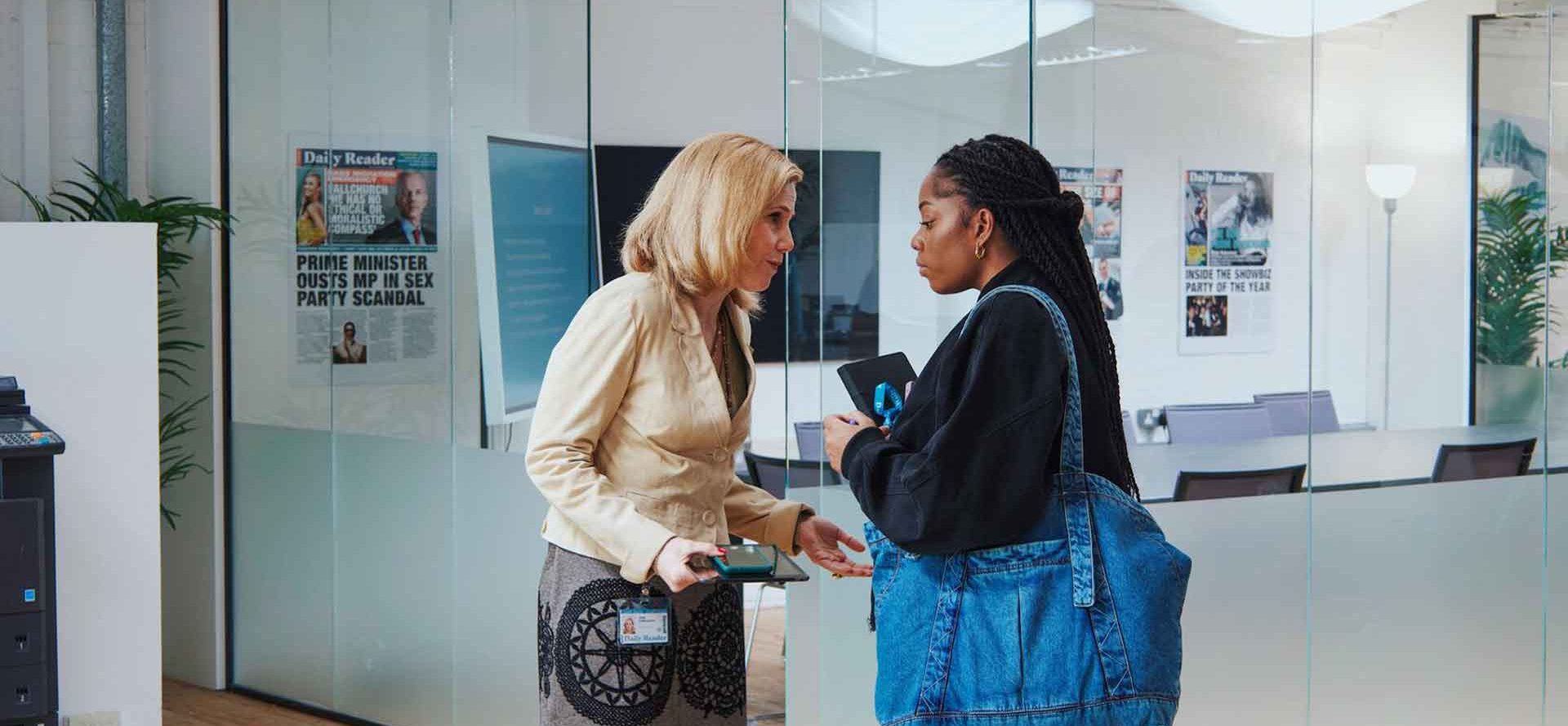‘Queenie’ is a Hulu show dissecting the struggles of a mid-20s British-Jamaican woman stuck in a rut, professionally and in her family life. Created by Candice Carty-Williams, the show follows the titular protagonist as she deals with a miscarriage, a failed relationship with her boyfriend, abandonment issues stemming back to past traumas, and a miserable job. Living in London, England, Queenie Jenkins has to come to terms with her identity and what it means to be a 25-year-old black woman confronting rejection and failure while leaning on the support of friends and family.
Thematically linking to the dark side of casual sex culture, the intricacies of a superficial society built on social media, and the complicated whirl of emotions affecting those who newly turn adults, it is a prescient examination of the times. Queenie’s life has many facets to its complexity, and while trauma can be an overriding aspect of her motivations, it also holds her back. As it decodes the striking and pressing matters around its lead character, the British show builds a layer of authenticity around its subject matter, prompting viewers to wonder whether the show is based on a real story.
The Literary Inspiration Behind Queenie
‘Queenie’ is based on a fictional novel of the same title written by its creator, Candice Carty-Williams. Acting as showrunner and executive producer, the writer, along with Natasha Brown, Ryan Calais Cameron, Yolanda Mercy, and Thara Popoola, co-wrote the screenplay, which intimately translates the mental health struggles and trauma fueling Queenie in the pages of the 2019 novel. While fictive in their conception, the accounts of Queenie Jenkins connect to the lives and struggles faced by Williams during her formation. She drew inspiration from past experiences and those of her friends to provide a complete picture of the ups and downs of life as a 25-year-old who is having a bad year.

The writer and creator told Stylist that the story’s genesis came to her while reflecting on a certain period of her life when things weren’t going well. This was when she worked as a senior publisher at Penguin. Her shift was a full-time ordeal where she would barely get time to do anything other than write all day. “I was living in a shitty studio, I had mice, slugs, damp, mould. It was bad,” she said. “I’d leave work on Friday, get all my shopping and then lock myself away writing until Monday morning. I’d emerge blinking, back to the humans.” Those difficult periods were crystallized as a source of inspiration when conceiving the narrative.
While the story delves into the depressive episodes of being young and not having things work out for you, it also embodies a witty and sarcastic attitude throughout its narrative. Queenie often pokes fun at her existence through internal monologues, almost challenging herself to do something other than what she always does in her periods of trouble. She knows her issues but lacks the courage to change her situation. This was an integral part of William’s inspiration for the story. She wanted to portray a young black woman living in Britain who wasn’t all-capable or had her life sorted. She was imperfect and messy, just like everyone else.
Queenie Explores Racism and Casual Hookup Culture
Another interesting aspect ‘Queenie’ tackles is the awkward racism the protagonist encounters when dealing with her social circle. Candice Carty-Williams was deeply interested in portraying how white men and black women interacted in romantic and sexual circumstances. These sexual encounters are essential to Queenie’s overall declining mental state. As she dives into casual hookups and one-night stands, it only erodes her self-worth and spirals her further into sadness. She harbors deep abandonment issues from her mother leaving her when she was young, which has led her to seek validation from men through sex.

Talking about the unedifying situations arising in Queenie’s dating life within the show, Williams said they, too, had a grounding in her own experiences. “There is a scene inspired by an experience my friend and I had,” she said. “She’s white and we realised we were both talking to the same guy on different dating apps. His opening to her was ‘Hi, I work with kids, I saw on your profile you do the same thing. I would love to go for a coffee.’ His message to me was ‘Hi, how about you take a day off work so I can f**k you?’ I wanted to comment on how one man can see two women completely differently.”
Queenie Jenkins doesn’t always make the right decisions for herself. Despite the hardships and trauma she has suffered, there is a self-professed awareness by Queenie regarding her own unwillingness to change the miserable nature of her life. But this also makes her a realistic portrayal of the people she is based on – people like Williams and her friends. The creator wanted her to embody the girls of her generation, the girls who were incapable of doing right for wrong, the girls who were constantly failing, and were heartbroken as a result. In a flurry of words, the creator summed it up herself – “I’m not Queenie, but we see the world through the same lens.”


You must be logged in to post a comment.